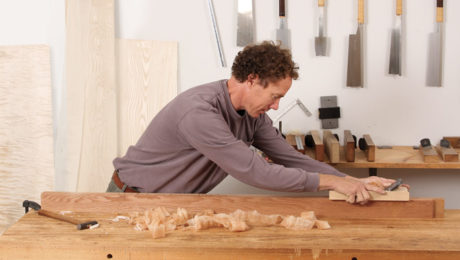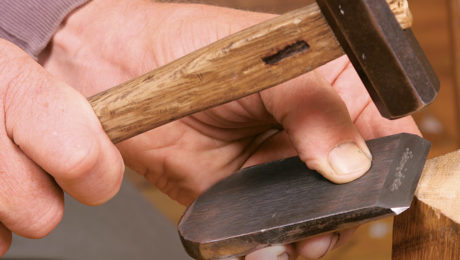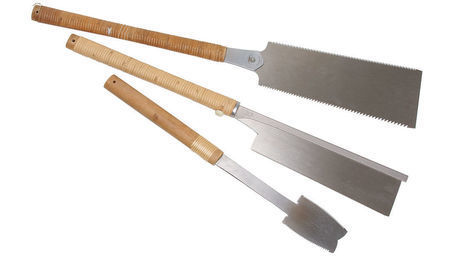All About Japanese Planes
Learning to use a Japanese plane takes time and dedication, but as Andrew Hunter demonstrates, the reward of the shimmering surface it leaves is well worth it.
Andrew Hunter first took the plunge into the unfamiliar waters of the kanna, or Japanese handplane, more than 15 years ago. Learning to use one takes time and dedication, but the reward of the shimmering surface it leaves is well worth it. Japanese planes cut on the pull stroke, and it can take a while to adapt to this, though when you do you’ll discover it gives you both more power and more control. The heart and soul of the Japanese plane is its massive tapered blade. A descendant of the samurai sword, the blade has a thin layer of super-hard steel laminated to a thick layer of softer mild steel or iron. The hard steel provides a cutting edge of unparalleled sharpness, while the softer backing metal dampens the heat and vibration of the cut.
 |
|
 |
|
 |







Comments
Andrew, does it matter whether a shaving comes out straight or crimped? I heard it on some interview that a crimped shaving is in indication of a chipbreaker being too close to an edge. Seeing how you get both straight and crimped shavings from the same plane makes me wonder whether that's true.
It seems authors don't receive notifications from questions to their videos. I'm not Andrew, but I think you should rather pay attention to the surface, not shavings. Anyway, a crimped shaving is either a chip breaker set too close, or a grind angle on your chipbreaker is too steep, or both. A shaving is crimped because it's not deflected, it happens on Western planes all the time and mechanics of it is the same.
When purchasing Japanese planes, what brands represent low, medium, or high quality? Not knowing the reputation of a company brand makes it difficult to make purchasing decisions online. Thank you!
You will have to research every individual brand and distributor, that would cover medium to lower premium planes. For really premium planes you would have to research specific blacksmiths and possibly dai makers, or a distributor that does pairing. Anything else could be assumed low to medium quality range. Please note that a medium level Japanese plane is a different beast than a medium level Western plane altogether, i.e. if you're looking for a "Stanley #4" kanna - there just isn't such a thing.
In simple words you can't go by just brand names, that's too vague. If you just want to get a feel for the Japanese planes you could try a used \NOS one from ebay, or try hardware store level distributor (Kakuri comes to mind), both options would be around 60-80$ in pre-COVID times. If you're seriously inclined to use Japanese planes as primary planes then definitely check out appropriate groups on other popular forums such as SMC and Lumberjocks, they have troves of info in archives and can provide an up to date advise. It's a really complicated matter indeed.
Log in or create an account to post a comment.
Sign up Log in